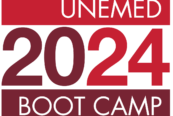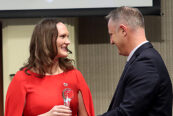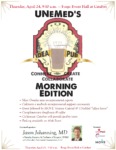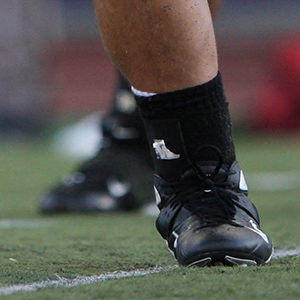by Bill Hadley, UNeMed | Nov. 19, 2012
Textbooks are expensive – really expensive. In fact, according to the U.S. Government Accountability Office, over the past two decades, the price of college textbooks has tripled, averaging around $1,200 a year for most students. Considering most students are on fairly tight budgets, it should come as no surprise, then, that there is a vibrant secondary market for used textbooks, and many students elect to save a healthy amount of money each year buying used books. In fact, this practice is so commonplace that the act of buying a used textbook is seen by most students as more or less a rite of passage in the college experience. Supap Kirtsaeng, however, saw it as an opportunity.
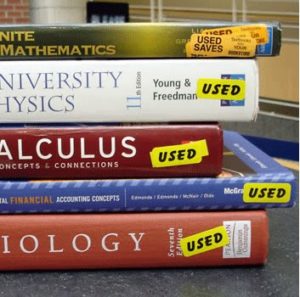 Kirtsaeng, a native of Thailand, came to the U.S. in 1997. While in the U.S., Kirtsaeng attended Cornell University and later received a PhD in mathematics from the University of Southern California. In order to subsidize his college expenses, Kirtsaeng did what many college students do: he sold used textbooks. There was only a small difference – Supap Kirtsaeng (allegedly) made over 1.2 million dollars doing so.
Kirtsaeng, a native of Thailand, came to the U.S. in 1997. While in the U.S., Kirtsaeng attended Cornell University and later received a PhD in mathematics from the University of Southern California. In order to subsidize his college expenses, Kirtsaeng did what many college students do: he sold used textbooks. There was only a small difference – Supap Kirtsaeng (allegedly) made over 1.2 million dollars doing so.
So how did Kirtsaeng pull that off? It’s actually quite simple: publishers generally charge more for textbooks sold in the U.S. than for those sold abroad. For example, where the market clearing price for a new textbook in the U.S. might be $200, a substantially similar version of the book might only be affordable for the equivalent of $20 to a student in Thailand. Recognizing this, Kirtsaeng’s family members would buy textbooks in Thailand at the reduced cost, ship them to Kirtsaeng, and Kirtsaeng would sell the books in the U.S. at a price undercutting the domestic cost of the textbook.
Catching onto this scheme in 2008, textbook publisher Wiley & Sons sued Kirtsaeng for infringing Wiley’s copyrights in the textbooks. Wiley eventually won the case, but certiorari was granted to Kirtsaeng’s appeal on April 16, 2011. On Monday, October 29, Kirtsaeng v. John Wiley Sons., Inc. was argued before the Supreme Court. The case highlights important aspects of the First Sale Doctrine – the principle which gives purchasers of a copyrighted work the right to sell that copy of the work to another downstream purchaser.
The first sale doctrine is an important limitation on the scope of copyright protection, so in light of having a copyrights case argued in front of our nation’s highest court, this seems as good a time as any to discuss it.
Codification of the First Sale Doctrine
The First Sale Doctrine is codified in U.S. under 17 U.S.C. § 109(a), which states, in relevant part:
Notwithstanding the provisions of §106(3), the owner of a particular copy or phonorecord lawfully made under this title, or any person authorized by such owner, is entitled, without the authority of the copyright owner, to sell or otherwise dispose of the possession of that copy or phonorecord…
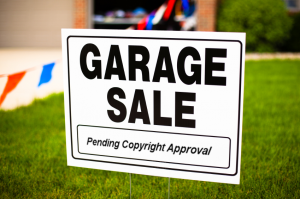 In other words, once a copy of a copyrighted work is purchased from the copyright holder (or otherwise “lawfully made”), the purchaser of that copy becomes the unlimited owner of the distribution rights (under §106(3) of the Copyright Act) in that copy. The purchaser is thereafter permitted to control, exclude, dispose of, transfer, or otherwise distribute the copy as the purchaser sees fit. The first sale doctrine does not give the purchaser a copyright interest in the author’s creative work; it only transfers to the purchaser the right to distribute their interest in the copy of the work.
In other words, once a copy of a copyrighted work is purchased from the copyright holder (or otherwise “lawfully made”), the purchaser of that copy becomes the unlimited owner of the distribution rights (under §106(3) of the Copyright Act) in that copy. The purchaser is thereafter permitted to control, exclude, dispose of, transfer, or otherwise distribute the copy as the purchaser sees fit. The first sale doctrine does not give the purchaser a copyright interest in the author’s creative work; it only transfers to the purchaser the right to distribute their interest in the copy of the work.
Issues at Play in Wiley v. Kirtsaeng
In theory, the first sale doctrine is fairly straightforward. Unfortunately, even the simplest legal principles can become startlingly complex in unforeseen circumstances – and that is certainly the case here. There are a variety of difficult issues the court is looking at in Kirtsaeng which will impact the rights enshrined in §109(a). Fortunately, a brief examination of these issues will serve as a good mechanism for understanding the application of the first sale doctrine in practice.
Let’s look at these outstanding issues now:
1.) Conflict with Import Rights
While §109(a) gives the owner of a lawfully-obtained copy of a copyrighted work the right to freely transfer ownership of that copy, 17 USC §602(a)(1) states that, “Importation into the United States, without the authority of the owner of copyright under this title, of copies or phonorecords of a work that have been acquired outside the United States is an infringement of the exclusive right to distribute copies or phonorecords under §106…”. In other words, importing of a copyrighted work into the US, without permission from the copyright owner, is considered copyright infringement under §106.
§602 carves out no exceptions for importation of works lawfully owned by an importer under the first sale doctrine; a plain reading of the text §602(a)(1) therefore conflicts with a plain reading of §109(a) when a person imports a copyrighted work which was lawfully obtained in accordance with the first sale doctrine. Clearly this makes no sense – and this is the primary reason the case has reached Supreme Court. It will be interesting to see how this conflict is resolved in the decision.
2.) Contractual Restraints on Alienability
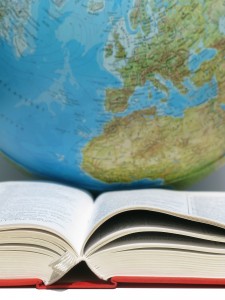 Each textbook sold abroad by Wiley was marked, “Authorized for sale in Europe, Asia, Africa, and the Middle East only…The Publisher may recover damages including but not limited to lost profits and attorney’s fees in the event that legal action is required.” Does this restraint reach through a lawful purchase to limit the distribution rights of the purchaser of the textbook?
Each textbook sold abroad by Wiley was marked, “Authorized for sale in Europe, Asia, Africa, and the Middle East only…The Publisher may recover damages including but not limited to lost profits and attorney’s fees in the event that legal action is required.” Does this restraint reach through a lawful purchase to limit the distribution rights of the purchaser of the textbook?
Generally speaking, United States common law disfavors unreasonable restraints on alienability built into the transfer or sale of property. In fact, the Supreme Court noted that such unreasonable restraints highlight the need for the First Sale Doctrine in the first place (see e.g. Bobbs-Merrill Co. v. Strauss, 210 U.S. 339 (1908)). On the other hand, recent cases (e.g. the 9th Circuit’s decision in Vernor v. Autodesk, Inc., No. 09-35969, slip op. at 13871-72), have found that a copyrighted work was licensed to a purchaser – as opposed to sold – and that title to the copy of the protected work was not transferred. Therefore, the first sale doctrine was not implicated and the restraints on alienability in the license were permissible.
While it is not likely that Kirtsaeng’s purchase of the textbooks overseas will be considered a ‘license’ to the textbooks, Vernor highlights an important principle that should be considered whenever the first sale doctrine is implicated: was title to the copy of the protected work actually transferred?
The First Sale Doctrine as a Policy
As an observer, determining who will prevail at the Supreme Court level is never easy; interestingly, it can be even more difficult to evaluate who we want to win. That is, the policy implications of a Supreme Court ruling are often just as difficult to untangle, if not more so, than the legal ramifications. Compounding the problem is that who we “want” to prevail is based on entirely subjective notions of fairness.
For example, is it fair to students in the U.S. (many of whom are, or will be, in difficult financial situations) that Wiley charges astronomical prices for its books in the US while charging barely above the break-even price for the same product abroad? It may not seem so at first blush, but it is important to remember that one of the hallmarks of intellectual property is that the rights-holder, by virtue of its monopoly power, has the right to sell his protected goods at a price of his choosing. Generally it is wise for the rights holder to choose the price that makes the most economic sense from a profit perspective – but should that include the right to segment the market (e.g. domestically and abroad), and if so, to what extent?
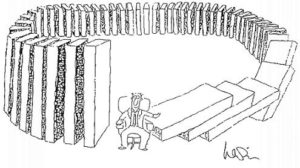 Moreover, consider the impact of the outcome: if Kirtsaeng wins and legitimate owners of copies of protected works are able to import them freely into the U.S., what will result? Probably not lower domestic textbook prices. Rather than drop prices domestically, Wiley and other publishers will more likely elect to sell each textbook at the same domestic price worldwide – thus, nullifying the incentive to import. The net effect of this is that domestic text book prices in the U.S. stay the same, while textbooks for students abroad become virtually nonexistent in some markets. Is that fair? On the other hand, if Wiley wins, what does that say about the first sale doctrine as a limitation on the scope of copyright considering the effects of globalization on the modern economy?
Moreover, consider the impact of the outcome: if Kirtsaeng wins and legitimate owners of copies of protected works are able to import them freely into the U.S., what will result? Probably not lower domestic textbook prices. Rather than drop prices domestically, Wiley and other publishers will more likely elect to sell each textbook at the same domestic price worldwide – thus, nullifying the incentive to import. The net effect of this is that domestic text book prices in the U.S. stay the same, while textbooks for students abroad become virtually nonexistent in some markets. Is that fair? On the other hand, if Wiley wins, what does that say about the first sale doctrine as a limitation on the scope of copyright considering the effects of globalization on the modern economy?
Let’s be clear: the Supreme Court is only supposed to rule on the matters of law in front of it, policy implications be damned. In theory, the view of the court is that, if ruling on the law results in bad policy, it is the job of the elected members of Congress to draft a law that reflects a good policy. In practice, however, it is naïve to think that policy matters are not considered by the court. Given that the scope of copyright – a policy – should be given at least some consideration in Kirtsaeng, it will be interesting to see how the court rules.
Cases like Kirtsaeng make it all the way to Supreme Court very rarely and the outcome could set a narrative for the way the court interprets the scope of copyrights for years to come – a particularly compelling topic considering the ambiguity in the copyright law as it pertains to the internet and digital mediums of expression.
If you have any questions or comments, please do not hesitate to contact the author or leave a comment below.
Join us next week when we discuss the implications of technology transfer.
|
About the Author
|
Bill is a licensing associate at UNeMed, where he handles evaluation, development, marketing, and licensing for medical device, software, and telemedicine-based invention disclosures. He received a B.S. in Chemistry from the Colorado School of Mines and a J.D. from the Creighton University School of Law. Bill is currently in training for next fall’s intramural volleyball league, where he has personally guaranteed at least one victory for the mighty UNeMed Volley Llamas. Contact Bill: Bill.Hadley@unmc.edu |


